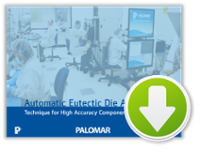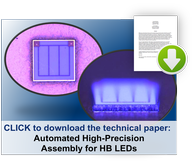U – Uniformity
We are seeing more and more innovation in form factor and functionality in solid-state lighting products as lighting manufacturers better understand how to leverage LED sources. Cree, for example, combined LEDs in an indirect fashion with a complex optical design to deliver a new parking-garage fixture that delivers uniform light.
Thermal-interface materials are also widely used in LED products, often as a thermally-conductive layer between an LED light engine and a heat sink. The material can ensure a more uniform and efficient thermal interface between the LEDs and heat sink than you would realize without the extra layer. Dow Corning makes a number of thermal-interface materials including films, gels, adhesives, gap fillers, and other compounds.
Epitaxy, a technique that involves growing a thin crystalline film of one material on top of another crystalline material, such that the crystal lattices match approximately, requires larger wafer size in order for a more uniform surface.
Upper Control Limit (UCL)
Upper control limit (UCL) is the limit one sets for total defects allowed on a wafer. For example, say that one sets the upper control limit at 1400 total defects, and three wafers have defect counts greater than 1400. These are the wafers that contain the most defects; however, their yields are relatively high compared to the baseline average yield of 76.25%. Clearly, many of those defects do not translate to yield loss.

V – Void-free
Critical to the LED assembly process is a void-free eutectic solder interface between the diode and its substrate that provides the thermal and electrical connections needed to generate a stable transmission of light.
The reflow profile during an in-situ eutectic die-attach process is engineered to provide consistent melting and a void-free attach interface. This is necessary for consistent heat transfer from the diode and contributes significantly to temperature stabilization during LED operation.
Temperature profile repeatability is critical to the process to allow proper eutectic wetting with low voids without damaging the LEDs. Required temperature profiles depend on the substrate materials, geometry, and solder composition.
LEDs attached using Au/Sn solder paste and no pressure yields a very good bond line with few voids.
For more on automated eutectic die attach, download the eBook:
Sources
LEDs Magazine, “LED-based luminaires: New designs from Cree, Acuity, and GE Lighting”, http://www.ledsmagazine.com/articles/2013/08/led-based-luminaires-new-designs-from-cree-acuity-and-ge-lighting.html.
LEDs Magazine, “Focus on Thermal at SIL”, http://www.ledsmagazine.com/articles/print/volume-10/issue-3/features/focus-on-thermal-at-sil-magazine.html.
LEDs Magazine, “Improve LED manufacturing via in-line monitoring and SPC”, http://www.ledsmagazine.com/articles/print/volume-10/issue-7/features/improve-led-manufacturing-via-in-line-monitoring-and-spc-magazine.html.
----
Janine Hueners
Marketing Specialist
Palomar Technologies, Inc.

